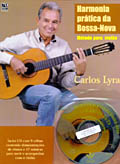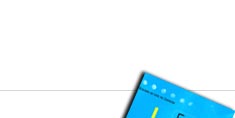 |
 CARLOS LYRA GUITAR METHOD CARLOS LYRA GUITAR METHOD
PRACTICAL HARMONY FOR BOSSA NOVA
Released in the middle of last year, “Practical Harmony of Bossa Nova” is now in its third edition, beating sales records at Editora Vitale.
Not content with merely releasing his guitar method through Irmãos Vitale last June, Carlos Lyra, brought in record-breaking sales for his publisher. His “Practical Harmony for Bossa Nova” with originally 3000 books printed, is now in its third edition.
“The number of books initially printed at Vitale is not particularly great because the interest our product generates is quite restricted... Eventually, our books might be suitable for only professional musicians, teachers and beginners. But the demand for Carlos Lyra’s book was surprising, “ says Fernando Vital, director of Irmãos Vitale, responsible for the request that Lyra write the book.
The release of the work in June of 2000 served as one of the commemorations for the composer’s 45 years of profession. Bearing the stamp of the Editora Irmaos Vitale, the book serves three purposes: First is that of a perfected method of those times past in which Lyra and Roberto Menescal were the most sought-out teachers of bossa nova guitar in Rio de Janeiro; next, it is a songbook with seventeen of the composer’s biggest hits transcribed both in score and ciphers; and, last, it is a CD with these same seventeen songs in a practical class on how to compose, play and sing the Brazilian song style best known throughout the world.
In the preface, maestro, pianist and composer Antonio Adolfo concludes his text saying that “it is with great respect that all those who study this book should regard the points of view of a master of music in every sense”. There: this release could stop here. But perhaps it is necessary to explain how Carlos Lyra worked the three functions of his new release, coordinated by the keyboard player Luciano Alves.
The first part is that of didactics. Beginning really at the beginning, explaining how chords are ciphered and altered by flats and sharps. Passing through the scales, Lyra arrives at the neck plate of the guitar, completely broken down into its chords, casilhas and possibilities of emission of notes and formation of chords. There effectively the class on harmony begins, going from the most simple intervals to dissonant chords, all very well illustrated with ciphers as well as with scores.
The second, the songbook. Obviously, the songbook also has a pedagogic function, although it is an official register of the work of a composer. In the case of Carlos Lyra and of the songs here transcribed to the pentagram, the privilege of discovering the solutions and details of the harmonization of songs such as “Canção que morre no ar”, “Influência do jazz”, “Lobo bobo”, “Marcha da Quarta-feira de Cinzas”, “Maria Ninguém”, “Primavera” e “Se é tarde me perdoa”, to name only a few, mingles with the pleasure of hearing them brought to life on the CD, the theory materialized in practice.
And therein lies the third function. The best: signed by the author himself. The master who created the method and teaches with light and fluent didactics, next to the artist who demonstrates his art, doubly registered for posterity, in the musical annotation and phonographically. Since some of these songs have dozens of recordings, (in other word, dozens of harmonies, transpositions of tons, etc.), it is always very interesting to know that, in the Irmãos Vitale release, one has the original version (therefore, the definitive version) of each work. The rest is adaptation.
Buy here the book Guitar Method.
|
 |






